Advances in aptamer-based biosensors for monitoring foodborne pathogens
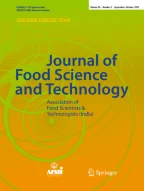
Biosensors are analytical devices for detecting a wide range of targets, including cells, proteins, DNA, enzymes, and chemical and biological compounds. They mostly rely on using bioprobes with a high binding affinity to the target for specific detection. However, low specificity and effectiveness of the conventional biosensors has led to the search for novel materials, that can specifically detect biomolecules. Aptamers are a group of single-stranded DNA or RNA oligonucleotides, that can bind to their targets with high specificity and serve as effective bioprobes for developing aptamer-based biosensors. Aptamers have a shorter production time, high stability, compared to traditional bioprobes, and possess ability to develop them for specific target molecules for tailored applications. Thus, various aptasensing approaches, including electrochemical, optical, surface plasmon resonance and chip-dependent approaches, have been investigated in recent times for various biological targets, including foodborne pathogens. Hence, this article is an overview of various conventional foodborne pathogen detection methods, their limitations and the ability of aptamer-based biosensors to overcome those limitations and replace them. In addition, the current status and advances in aptamer-based biosensors for the detection of foodborne pathogens to ensure food safety were also discussed.
This is a preview of subscription content, log in via an institution to check access.
Access this article
Subscribe and save
Springer+ Basic
€32.70 /Month
- Get 10 units per month
- Download Article/Chapter or eBook
- 1 Unit = 1 Article or 1 Chapter
- Cancel anytime
Buy Now
Price includes VAT (France)
Instant access to the full article PDF.
Rent this article via DeepDyve
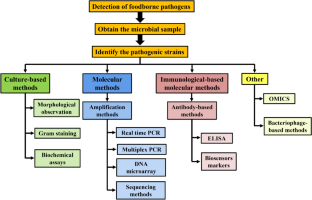
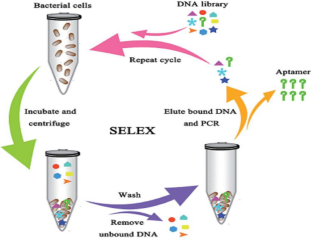

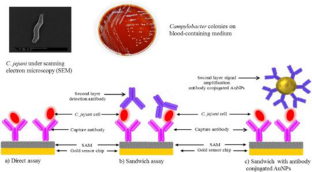
Similar content being viewed by others
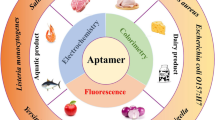
Research progress on the detection of foodborne pathogens based on aptamer recognition
Article 10 May 2024

Nanoengineered Aptamer Assisted Strategies for the Detection of Foodborne Pathogens
Chapter © 2022
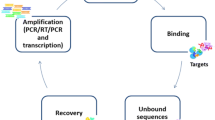
An overview and future prospects on aptamers for food safety
Article 25 June 2020
References
- Abdul-Mutalib NA, Syafinaz AN, Sakai K, Shirai Y (2015) An overview of foodborne illness and food safety in Malaysia. Int Food Res J 22:896 Google Scholar
- Adley CC, Ryan MP (2016) The nature and extent of foodborne disease. In: Antimicrobial food packaging, pp. 1–10. Academic Press
- Alsager OA, Alotaibi KM, Alswieleh AM, Alyamani BJ (2018) Colorimetric aptasensor of vitamin D3: a novel approach to eliminate residual adhesion between aptamers and gold nanoparticles. Sci Rep 8:12947 ArticlePubMedPubMed CentralGoogle Scholar
- Anany H et al (2018) Print to detect: a rapid and ultrasensitive phage-based dipstick assay for foodborne pathogens. Anal Bioanal Chem 410:1217–1230 ArticleCASPubMedGoogle Scholar
- Arghya S, Suradip D, Pragya S, Utpal B (2012) Aptasensors in health, environment and food safety monitoring. Open J Appl Biosensor. https://doi.org/10.4236/ojab.2012.12002ArticleGoogle Scholar
- Aschfalk A, Müller W (2002) Clostridium perfringens toxin types from wild-caught Atlantic cod (Gadusmorhua L.), determined by PCR and ELISA. Can J Microbiol 48:365–368 ArticleCASPubMedGoogle Scholar
- Aslan Y, Atabay M, Chowdhury HK, Göktürk I, Saylan Y, Inci F (2023) Aptamer-based point-of-care devices: emerging technologies and integration of computational methods. Biosensors 13:569 ArticleCASPubMedPubMed CentralGoogle Scholar
- Astill J, Dara RA, Campbell M, Farber JM, Fraser EDG, Sharif S, Yada RY (2019) Transparency in food supply chains: a review of enabling technology solutions. Trends Food Sci Technol 91:240–247 ArticleCASGoogle Scholar
- Bacon RT, Sofos JN (2003) Characteristics of biological hazards in foods. Food Safety Handb 10:157–195 ArticleGoogle Scholar
- Barbau-Piednoir E, Mahillon J, Pillyser J, Coucke W, Roosens NH, Botteldoorn N (2014) Evaluation of viability-qPCR detection system on viable and dead Salmonella serovar Enteritidis. J Microbiol Methods 103:131–137 ArticleCASPubMedGoogle Scholar
- Berhanu G, Dula TI (2020) Types, importance and limitations of DNA microarray. Glob J Biotechnol Biochem 15:25–31 CASGoogle Scholar
- Bharadwaj S, Dwivedi VD, Kirtipal N (2019) Application of whole genome sequencing (WGS) approach against identification of foodborne bacteria. In: Microbial genomics in sustainable agroecosystems. Springer, pp 131–148
- Bhunia AK (2018) Introduction to foodborne pathogens. In: Foodborne microbial pathogens. Springer, pp 1–23
- Billington C, Kingsbury JM, Rivas L (2022) Metagenomics approaches for improving food safety: a review. J Food Prot 85:448–464 ArticleCASPubMedGoogle Scholar
- Bintsis T (2017) Foodborne pathogens. AIMS Microbiol 3:529 ArticleCASPubMedPubMed CentralGoogle Scholar
- Bintsis T (2018) Lactic acid bacteria as starter cultures: an update in their metabolism and genetics. AIMS Microbiol 4:665 ArticleCASPubMedPubMed CentralGoogle Scholar
- Boukharouba A, González A, García-Ferrús M, Ferrús MA, Botella S (2022) Simultaneous detection of four main foodborne pathogens in ready-to-eat food by using a simple and rapid multiplex PCR (mPCR) assay. Int J Environ Res Public Health 19:1031 ArticleCASPubMedPubMed CentralGoogle Scholar
- Buchanan RL, Gorris LGM, Hayman MM, Jackson TC, Whiting RC (2017) A review of Listeria monocytogenes: an update on outbreaks, virulence, dose-response, ecology, and risk assessments. Food Control 75:1–13 ArticleGoogle Scholar
- Byrne B, Stack E, Gilmartin N, O’Kennedy R (2009) Antibody-based sensors: principles, problems and potential for detection of pathogens and associated toxins. Sensors 9:4407–4445 ArticleCASPubMedPubMed CentralGoogle Scholar
- Cai R, Zhang Z, Chen H, Tian Y, Zhou N (2021) A versatile signal-on electrochemical biosensor for Staphylococcusaureus based on triple-helix molecular switch. Sens Actuators B Chem 326:128842 ArticleCASGoogle Scholar
- Cajka T, Vaclavikova M, Dzuman Z, Vaclavik L, Ovesna J, Hajslova J (2014) Rapid LC-MS-based metabolomics method to study the Fusarium infection of barley. J Sep Sci 37:912–919 ArticleCASPubMedGoogle Scholar
- Cao X et al (2009) Combining use of a panel of ssDNA aptamers in the detection of Staphylococcusaureus. Nucleic Acids Res 37:4621–4628 ArticleCASPubMedPubMed CentralGoogle Scholar
- Celik Uzuner S (2020) Mitochondrial DNA methylation misleads global DNA methylation detected by antibody-based methods. Anal Biochem 601:113789. https://doi.org/10.1016/j.ab.2020.113789ArticleCASPubMedGoogle Scholar
- Chao G, Zhou X, Jiao X, Qian X, Xu L (2007) Prevalence and antimicrobial resistance of foodborne pathogens isolated from food products in China. Foodborne Pathog Dis 4:277–284 ArticleCASPubMedGoogle Scholar
- Chen Y, Wang Z, Shi Q, Huang S, Yu T, Zhang L, Yang H (2021) Multiplex PCR method for simultaneous detection of five pathogenic bacteria closely related to foodborne diseases. 3 Biotech 11:1–8 ArticleGoogle Scholar
- Chen W, Lai Q, Zhang Y, Liu Z (2022) Recent advances in aptasensors for rapid and sensitive detection of StaphylococcusAureus. Front Bioeng Biotechnol. https://doi.org/10.3389/fbioe.2022.889431ArticlePubMedPubMed CentralGoogle Scholar
- Cifuentes A (2009) Food analysis and foodomics. J Chromatogr A 1216(43):7109. https://doi.org/10.1016/j.chroma.2009.09.018ArticleCASGoogle Scholar
- Cooper MA (2003) Label-free screening of bio-molecular interactions. Anal Bioanal Chem 377:834–842 ArticleCASPubMedGoogle Scholar
- Coral-Almeida M, Gabriël S, Abatih EN, Praet N, Benitez W, Dorny P (2015) Taenia solium human cysticercosis: a systematic review of sero-epidemiological data from endemic zones around the world. PLoS Negl Trop Dis 9:e0003919 ArticlePubMedPubMed CentralGoogle Scholar
- Costantini F et al (2019) Fluorescent label-free aptasensor integrated in a lab-on-chip system for the detection of ochratoxin a in beer and wheat. ACS Appl Bio Mater 2:5880–5887. https://doi.org/10.1021/acsabm.9b00831ArticleCASPubMedGoogle Scholar
- Croxen MA, Law RJ, Scholz R, Keeney KM, Wlodarska M, Finlay BB (2013) Recent advances in understanding enteric pathogenic Escherichiacoli. Clin Microbiol Rev 26:822–880 ArticleCASPubMedPubMed CentralGoogle Scholar
- de Blackburn CW, McClure PJ (2009) Pathogenic Bacillus species. In: Foodborne pathogens. Elsevier, pp 844–888
- Desta B (2020) Estimating burden of foodborne diseases where public health impact is higher and data scarcer: a study in four African countries. Eur J Public Health 30:ckaa165-950 ArticleGoogle Scholar
- Divya DDS, Kumari R, Mahapatra S, Kumar R, Chandra P (2022) Ultrasensitive aptasensors for the detection of viruses based on opto-electrochemical readout systems. Biosensors 12:81 ArticleCASPubMedPubMed CentralGoogle Scholar
- Dkhar DS, Kumari R, Malode SJ, Shetti NP, Chandra P (2022) Integrated lab-on-a-chip devices: fabrication methodologies, transduction system for sensing purposes. J Pharm Biomed Anal 223:115120 ArticlePubMedGoogle Scholar
- Doyle MP, Diez-Gonzalez F, Hill C (2020) Food microbiology: fundamentals and frontiers. John Wiley & Sons, Hoboken Google Scholar
- Du X-j, Zhou T-j, Li P, Wang S (2017) A rapid Salmonella detection method involving thermophilic helicase-dependent amplification and a lateral flow assay. Mol Cell Probes 34:37–44 ArticleCASPubMedGoogle Scholar
- Duan YF, Ning Y, Song Y, Deng L (2014) Fluorescent aptasensor for the determination of Salmonella typhimurium based on a graphene oxide platform. Microchimica Acta 181:647–653 ArticleCASGoogle Scholar
- Duan N, Wu S, Dai S, Miao T, Chen J, Wang Z (2015) Simultaneous detection of pathogenic bacteria using an aptamer based biosensor and dual fluorescence resonance energy transfer from quantum dots to carbon nanoparticles. Microchim Acta 182:917–923 ArticleCASGoogle Scholar
- Duan N, Chang B, Zhang H, Wang Z, Wu S (2016a) Salmonella typhimurium detection using a surface-enhanced Raman scattering-based aptasensor. Int J Food Microbiol 218:38–43 ArticleCASPubMedGoogle Scholar
- Duan Y, Gao Z, Wang L, Wang H, Zhang H, Li H (2016b) Selection and identification of chloramphenicol-specific DNA aptamers by Mag-SELEX. Appl Biochem Biotechnol 180:1644–1656 ArticleCASPubMedGoogle Scholar
- Dursun AD, Borsa BA, Bayramoglu G, Arica MY, Ozalp VC (2022) Surface plasmon resonance aptasensor for Brucella detection in milk. Talanta 239:123074. https://doi.org/10.1016/j.talanta.2021.123074ArticleCASPubMedGoogle Scholar
- Dwivedi HP, Smiley RD, Jaykus L-A (2010) Selection and characterization of DNA aptamers with binding selectivity to Campylobacterjejuni using whole-cell SELEX. Appl Microbiol Biotechnol 87:2323–2334 ArticleCASPubMedGoogle Scholar
- E Wang R, Zhang Y, Cai J, Cai W, Gao T (2011) Aptamer-based fluorescent biosensors. Curr Med Chem 18:4175–4184 ArticleGoogle Scholar
- Ellington AD, Szostak JW (1990) In vitro selection of RNA molecules that bind specific ligands. Nature 346:818–822 ArticleCASPubMedGoogle Scholar
- Engvall EO, Perlmann P (1972) Enzyme-linked immunosorbent assay, Elisa. 3. Quantitation of specific antibodies by enzyme-labeled anti-immunoglobulin in antigen-coated tubes. J Immunol 109(1):129–135 ArticleCASPubMedGoogle Scholar
- Fang Z, Wu W, Lu X, Zeng L (2014) Lateral flow biosensor for DNA extraction-free detection of salmonella based on aptamer mediated strand displacement amplification. Biosens Bioelectron 56:192–197 ArticleCASPubMedGoogle Scholar
- Farka Z, Jurik T, Kovář D, Trnkova L, Skládal P (2017) Nanoparticle-based immunochemical biosensors and assays: recent advances and challenges. Chem Rev 117:9973–10042 ArticleCASPubMedGoogle Scholar
- Ferone M, Gowen A, Fanning S, Scannell AGM (2020) Microbial detection and identification methods: bench top assays to omics approaches. Compr Rev Food Sci Food Saf 19:3106–3129 ArticlePubMedGoogle Scholar
- Flynn K et al (2019) An introduction to current food safety needs. Trends Food Sci Technol 84:1–3 ArticleCASGoogle Scholar
- Foddai ACG, Grant IR (2020) Methods for detection of viable foodborne pathogens: current state-of-art and future prospects. Appl Microbiol Biotechnol 104:4281–4288 ArticleCASPubMedPubMed CentralGoogle Scholar
- Fujimoto Y, Nakamura Y, Ohuchi S (2012) HEXIM1-binding elements on mRNAs identified through transcriptomic SELEX and computational screening. Biochimie 94:1900–1909 ArticleCASPubMedGoogle Scholar
- Gandhi M, Chikindas ML (2007) Listeria: a foodborne pathogen that knows how to survive. Int J Food Microbiol 113:1–15 ArticlePubMedGoogle Scholar
- Gao X, Jiang T, Qin W (2022) Potentiometric aptasensing of Escherichiacoli based on electrogenerated chemiluminescence as a highly sensitive readout. Biosens Bioelectron 200:113923. https://doi.org/10.1016/j.bios.2021.113923ArticleCASPubMedGoogle Scholar
- García A, Fox JG, Besser TE (2010) Zoonotic enterohemorrhagic Escherichiacoli: a One Health perspective. ILAR J 51:221–232 ArticlePubMedGoogle Scholar
- Gaudreault J, Forest-Nault C, De Crescenzo G, Durocher Y, Henry O (2021) On the use of surface plasmon resonance-based biosensors for advanced bioprocess monitoring. Processes 9:1996 ArticleCASGoogle Scholar
- Geng T, Bhunia AK (2006) Optical biosensors in foodborne pathogen detection. In: Smart biosensor technology. CRC Press, pp 527–542
- Glynn B, Lahiff S, Wernecke M, Barry T, Smith TJ, Maher M (2006) Current and emerging molecular diagnostic technologies applicable to bacterial food safety. Int J Dairy Technol 59:126–139 ArticleCASGoogle Scholar
- Gómez-Govea M, Solís-Soto L, Heredia N, García S, Moreno G, Tovar O, Isunza G (2012) Analysis of microbial contamination levels of fruits and vegetables at retail in Monterrey, Mexico. J Food Agric Environ 10:152–156 Google Scholar
- Gould LH, Walsh KA, Vieira AR, Herman K, Williams IT, Hall AJ, Cole D (2013) Surveillance for foodborne disease outbreaks—United States, 1998–2008. Morb Mortal Wkly Rep Recomm Rep 62:1–34 Google Scholar
- Gourama H (2020) Foodborne pathogens. In: Food safety engineering. Springer, pp 25–49
- Grace D (2015) Food safety in low and middle income countries. Int J Environ Res Public Health 12:10490–10507 ArticleCASPubMedPubMed CentralGoogle Scholar
- Gribanyov D, Zhdanov G, Olenin A, Lisichkin G, Gambaryan A, Kukushkin V, Zavyalova E (2021) SERS-based colloidal aptasensors for quantitative determination of influenza virus. Int J Mol Sci 22:1842 ArticleCASPubMedPubMed CentralGoogle Scholar
- Grumezescu AM, Holban AM (2018) Food control and biosecurity, vol 16. Academic Press, Cambridge Google Scholar
- Hamula CLA, Guthrie JW, Zhang H, Li X-F, Le XC (2006) Selection and analytical applications of aptamers. TrAC Trends Anal Chem 25:681–691 ArticleCASGoogle Scholar
- Hamula CLA, Zhang H, Guan LL, Li X-F, Le XC (2008) Selection of aptamers against live bacterial cells. Anal Chem 80:7812–7819 ArticleCASPubMedGoogle Scholar
- Han D et al (2019) An enzyme-free electrochemiluminesce aptasensor for the rapid detection of Staphylococcusaureus by the quenching effect of MoS2-PtNPs-vancomycin to S2O8 2− /O2 system. Sens Actuators B Chem 288:586–593 ArticleCASGoogle Scholar
- Hayat A, Marty JL (2014) Aptamer based electrochemical sensors for emerging environmental pollutants. Front Chem 2:41 ArticlePubMedPubMed CentralGoogle Scholar
- Heredia N, García S (2018) Animals as sources of food-borne pathogens: a review. Anim Nutr 4:250–255 ArticlePubMedPubMed CentralGoogle Scholar
- Holban AM, Grumezescu AM (2018) Preface for volume 16: food control and biosecurity. In: Food control and biosecurity. Elsevier, pp. xxiii–xxvi
- Holman DB et al (2019) Chlortetracycline enhances tonsil colonization and fecal shedding of multidrug-resistant Salmonellaenterica serovar Typhimurium DT104 without major alterations to the porcine tonsillar and intestinal microbiota. Appl Environ Microbiol 85:e02354-e12318 ArticleCASPubMedPubMed CentralGoogle Scholar
- Holmqvist M, Stensjö K, Oliveira P, Lindberg P, Lindblad P (2009) Characterization of the hupSL promoter activity in Nostoc punctiformeATCC 29133. BMC Microbiol 9:1–12 ArticleGoogle Scholar
- Hong S-L, Xiang M-Q, Tang M, Pang D-W, Zhang Z-L (2019) Ebola virus aptamers: from highly efficient selection to application on magnetism-controlled chips. Anal Chem 91:3367–3373 ArticleCASPubMedGoogle Scholar
- Huang X et al (2020) AIEgens: An emerging fluorescent sensing tool to aid food safety and quality control. Compr Rev Food Sci Food Saf 19:2297–2329 ArticleCASPubMedGoogle Scholar
- Huang Z, Yu X, Yang Q, Zhao Y, Wu W (2021) Aptasensors for Staphylococcusaureus risk assessment in food. Front Microbiol 12:714265 ArticlePubMedPubMed CentralGoogle Scholar
- Hünniger T, Wessels H, Fischer C, Paschke-Kratzin A, Fischer M (2014) Just in time-selection: a rapid semiautomated SELEX of DNA aptamers using magnetic separation and BEAMing. Anal Chem 86:10940–10947 ArticlePubMedGoogle Scholar
- Hurley D et al (2019) Whole-genome sequencing-based characterization of 100 Listeria monocytogenes isolates collected from food processing environments over a four-year period. Msphere 4:e00252-e1219 ArticleCASPubMedPubMed CentralGoogle Scholar
- Hussain MA, Dawson CO (2013) Economic impact of food safety outbreaks on food businesses. Foods 2:585–589 ArticlePubMedPubMed CentralGoogle Scholar
- Jagadeesan B et al (2019) The use of next generation sequencing for improving food safety: translation into practice. Food Microbiol 79:96–115 ArticleCASPubMedGoogle Scholar
- Jaisankar A, Krishnan S, Rangasamy L (2022) Recent developments of aptamer-based lateral flow assays for point-of-care (POC) diagnostics. Anal Biochem 655:114874 ArticleCASPubMedGoogle Scholar
- Jaklevic MC (2020) FDA expands food safety collaboration with Mexico. JAMA 324:1934–1934 PubMedGoogle Scholar
- Jauset-Rubio M, El-Shahawi MS, Bashammakh AS, Alyoubi AO, Ciara KO (2017) Advances in aptamers-based lateral flow assays. TrAC Trends Anal Chem 97:385–398 ArticleCASGoogle Scholar
- Jemmi T, Stephan R (2006) Listeria monocytogenes: food-borne pathogen and hygiene indicator. Rev Sci Tech 25:571–580 ArticleCASPubMedGoogle Scholar
- Jia F, Duan N, Wu S, Dai R, Wang Z, Li X (2016) Impedimetric Salmonella aptasensor using a glassy carbon electrode modified with an electrodeposited composite consisting of reduced graphene oxide and carbon nanotubes. Microchim Acta 183:337–344 ArticleCASGoogle Scholar
- Khang J, Kim D, Chung KW, Lee JH (2016) Chemiluminescent aptasensor capable of rapidly quantifying Escherichiacoli O157: H7. Talanta 147:177–183 ArticleCASPubMedGoogle Scholar
- Khateb H, Klös G, Meyer RL, Sutherland DS (2020) Development of a label-free LSPR-apta sensor for Staphylococcusaureus detection. ACS Appl Bio Mater 3:3066–3077 ArticleCASPubMedGoogle Scholar
- Kim JS et al (2007) A novel multiplex PCR assay for rapid and simultaneous detection of five pathogenic bacteria: Escherichiacoli O157: H7, Salmonella, Staphylococcusaureus, Listeriamonocytogenes, and Vibrioparahaemolyticus. J Food Prot 70:1656–1662 ArticleCASPubMedGoogle Scholar
- Kolm C et al (2020) DNA aptamers against bacterial cells can be efficiently selected by a SELEX process using state-of-the art qPCR and ultra-deep sequencing. Sci Rep 10:1–16 ArticleGoogle Scholar
- Kumar BK, Raghunath P, Devegowda D, Deekshit VK, Venugopal MN, Karunasagar I, Karunasagar I (2011) Development of monoclonal antibody based sandwich ELISA for the rapid detection of pathogenic Vibrioparahaemolyticus in seafood. Int J Food Microbiol 145:244–249 ArticleCASPubMedGoogle Scholar
- Kwol VS, Avci T, Eluwole KK, Dalhatu A (2020) Food safety knowledge and hygienic-sanitary control: a needed company for public well-being. J Public Aff 20:e2067 ArticleGoogle Scholar
- Law JW-F, Ab Mutalib N-S, Chan K-G, Lee L-H (2015) Rapid methods for the detection of foodborne bacterial pathogens: principles, applications, advantages and limitations. Front Microbiol 5:770 ArticlePubMedPubMed CentralGoogle Scholar
- Lee H, Yoon Y (2021) Etiological agents implicated in foodborne illness world wide. Food Sci Anim Resour 41:1 ArticlePubMedPubMed CentralGoogle Scholar
- Lerdsri J, Chananchana W, Upan J, Sridara T, Jakmunee J (2020) Label-free colorimetric aptasensor for rapid detection of aflatoxin B1 by utilizing cationic perylene probe and localized surface plasmon resonance of gold nanoparticles. Sens Actuators B Chem 320:128356 ArticleCASGoogle Scholar
- Liu R et al (2021) Development of a fluorescence aptasensor for rapid and sensitive detection of Listeria monocytogenes in food. Food Control 122:107808. https://doi.org/10.1016/j.foodcont.2020.107808ArticleCASGoogle Scholar
- Liu M et al (2022) Liquid crystal-based optical aptasensor for the sensitive and selective detection of Gram-negative bacteria. Sci China Chem 65:2023–2030. https://doi.org/10.1007/s11426-022-1336-xArticleCASGoogle Scholar
- Liu J, Xie G, Lv S, Xiong Q, Xu H (2023) Recent applications of rolling circle amplification in biosensors and DNA nanotechnology. TrAC Trends Anal Chem 160:116953 ArticleCASGoogle Scholar
- Long W, Patra I, Rahi Alhachami F, Akhrarovich Sherbekov U, Majdi A, Abed SA (2022) aptamer based nanoprobes for detection of foodborne virus in food and environment samples: recent progress and challenges. Crit Rev Anal Chem. https://doi.org/10.1080/10408347.2022.2114785ArticlePubMedGoogle Scholar
- Lorenz C, Von Pelchrzim F, Schroeder R (2006) Genomic systematic evolution of ligands by exponential enrichment (Genomic SELEX) for the identification of protein-binding RNAs independent of their expression levels. Nat Protoc 1:2204–2212 ArticleCASPubMedGoogle Scholar
- Lorenz C et al (2010) Genomic SELEX for Hfq-binding RNAs identifies genomic aptamers predominantly in antisense transcripts. Nucleic Acids Res 38:3794–3808 ArticleCASPubMedPubMed CentralGoogle Scholar
- Lund BM, O’Brien SJ (2011) The occurrence and prevention of foodborne disease in vulnerable people. Foodborne Pathog Dis 8:961–973 ArticlePubMedPubMed CentralGoogle Scholar
- Ma Y, Li X, Li W, Liu Z (2018) Glycan-imprinted magnetic nanoparticle-based SELEX for efficient screening of glycoprotein-binding aptamers. ACS Appl Mater Interfaces 10:40918–40926 ArticleCASPubMedGoogle Scholar
- Mahmoud B (2019) The most common food safety incidents related to developing countries. Food Safety Magazine 11(1–4). https://www.foodsafetymagazine.com/enewsletter/the-most-common-food-safetyincidents-related-to-developing-countries/
- Majdinasab M, Hayat A, Marty JL (2018) Aptamer-based assays and aptasensors for detection of pathogenic bacteria in food samples. TrAC Trends Anal Chem 107:60–77 ArticleCASGoogle Scholar
- Mandal PK, Biswas AK, Choi K, Pal UK (2011) Methods for rapid detection of foodborne pathogens: an overview. Am J Food Technol 6:87–102 ArticleGoogle Scholar
- Masdor NA, Altintas Z, Tothill IE (2017) Surface plasmon resonance immunosensor for the detection of Campylobacter jejuni. Chemosensors 5:16 ArticleGoogle Scholar
- McMeekin TA (2003) Detecting pathogens in food. Elsevier, Amsterdam BookGoogle Scholar
- Meyer C, Fredriksson-Ahomaa M, Sperner B, Märtlbauer E (2011) Detection of Listeria monocytogenes in pork and beef using the VIDAS® LMO2 automated enzyme linked immunoassay method. Meat Sci 88:594–596 ArticlePubMedGoogle Scholar
- Miller S, Chiu C (2022) The role of metagenomics and next-generation sequencing in infectious disease diagnosis. Clin Chem 68:115–124 ArticleGoogle Scholar
- Mishra RK, Hayat A, Catanante G, Ocaña C, Marty J-L (2015) A label free aptasensor for Ochratoxin A detection in cocoa beans: an application to chocolate industries. Anal Chim Acta 889:106–112 ArticleCASPubMedGoogle Scholar
- Mulugeta K (2010) Food safety and foodborne disease in 21st century homes. Canada J Infect Dis 14(5):277–280 Google Scholar
- Nassarawa SS, Luo Z, Lu Y (2022) Conventional and emerging techniques for detection of foodborne pathogens in horticulture crops: a leap to food safety. Food Bioprocess Technol 15:1248–1267 ArticleGoogle Scholar
- Nehra M, Kumar V, Kumar R, Dilbaghi N, Kumar S (2022) Current scenario of pathogen detection techniques in agro-food sector. Biosensors 12:489 ArticleCASPubMedPubMed CentralGoogle Scholar
- Nguyen TT-Q, Gu MB (2023) An ultrasensitive electrochemical aptasensor using Tyramide-assisted enzyme multiplication for the detection of Staphylococcus aureus. Biosens Bioelectron 228:115199. https://doi.org/10.1016/j.bios.2023.115199ArticleCASPubMedGoogle Scholar
- Nguyen HH, Park J, Kang S, Kim M (2015) Surface plasmon resonance: a versatile technique for biosensor applications. Sensors 15:10481–10510 ArticleCASPubMedPubMed CentralGoogle Scholar
- Nikoleli G-P, Siontorou CG, Nikolelis DP, Bratakou S, Karapetis S, Tzamtzis N (2018) Biosensors based on microfluidic devices lab-on-a-chip and microfluidic technology. Nanotechnol Biosens. https://doi.org/10.1016/B978-0-12-813855-7.00013-1ArticleGoogle Scholar
- Oliver JD (2010) Recent findings on the viable but nonculturable state in pathogenic bacteria. FEMS Microbiol Rev 34:415–425 ArticleCASPubMedGoogle Scholar
- Pandhi S, Kumar A, Mishra S (2023) Foodborne diseases: causative agents and related microorganisms. In: Global food safety. Apple Academic Press, pp 39–55
- Park L, Kim J, Lee JH (2013) Role of background observed in aptasensor with chemiluminescence detection. Talanta 116:736–742 ArticleCASPubMedGoogle Scholar
- Pestourie C et al (2006) Comparison of different strategies to select aptamers against a transmembrane protein target. Oligonucleotides 16:323–335 ArticleCASPubMedGoogle Scholar
- Pires SM et al (2021) Burden of foodborne diseases: think global, act local. Curr Opin Food Sci 39:152–159 ArticlePubMedPubMed CentralGoogle Scholar
- Postollec F, Falentin H, Pavan S, Combrisson J, Sohier D (2011) Recent advances in quantitative PCR (qPCR) applications in food microbiology. Food Microbiol 28:848–861 ArticleCASPubMedGoogle Scholar
- Priyanka B, Patil RK, Dwarakanath S (2016) A review on detection methods used for foodborne pathogens. Indian J Med Res 144:327 ArticleCASPubMedPubMed CentralGoogle Scholar
- Radhakrishnan S, Mathew M, Rout CS (2022) Microfluidic sensors based on two-dimensional materials for chemical and biological assessments. Mater Adv 3:1874–1904 ArticleCASGoogle Scholar
- Radhika M, Saugata M, Murali HS, Batra HV (2014) A novel multiplex PCR for the simultaneous detection of Salmonella enterica and Shigella species. Braz J Microbiol 45:667–676 ArticleCASPubMedPubMed CentralGoogle Scholar
- Radi A-E (2011) Electrochemical aptamer-based biosensors: recent advances and perspectives. Int J Electrochem 2011:863196. https://doi.org/10.4061/2011/863196
- Radi A-E, Abd-Ellatief MR (2021) Electrochemical aptasensors: current status and future perspectives. Diagnostics 11:104 ArticleCASPubMed CentralGoogle Scholar
- Richter Ł, Janczuk-Richter M, Niedziółka-Jönsson J, Paczesny J, Hołyst R (2018) Recent advances in bacteriophage-based methods for bacteria detection. Drug Discov Today 23:448–455 ArticleCASPubMedGoogle Scholar
- Ronholm J (2018) Game changer-Next generation sequencing and its impact on food microbiology, vol 9. Frontiers Media, Lausanne BookGoogle Scholar
- Rubab M, Shahbaz HM, Olaimat AN, Oh D-H (2018) Biosensors for rapid and sensitive detection of Staphylococcusaureus in food. Biosens Bioelectron 105:49–57 ArticleCASPubMedGoogle Scholar
- Rudi K, Moen B, Drømtorp SM, Holck AL (2005) Use of ethidium monoazide and PCR in combination for quantification of viable and dead cells in complex samples. Appl Environ Microbiol 71:1018–1024 ArticleCASPubMedPubMed CentralGoogle Scholar
- Sande MG et al (2022) Electrochemical aptasensor for the detection of the key virulence factor YadA of Yersiniaenterocolitica. Biosensors (basel). https://doi.org/10.3390/bios12080614ArticlePubMedGoogle Scholar
- Santiago-Felipe S, Tortajada-Genaro LA, Puchades R, Maquieira A (2014) Recombinase polymerase and enzyme-linked immunosorbent assay as a DNA amplification-detection strategy for food analysis. Anal Chim Acta 811:81–87 ArticleCASPubMedGoogle Scholar
- Saravanan A, Kumar PS, Hemavathy RV, Jeevanantham S, Kamalesh R, Sneha S, Yaashikaa PR (2021) Methods of detection of food-borne pathogens: a review. Environ Chem Lett 19:189–207 ArticleCASGoogle Scholar
- Sarojnalini C, Hei A (2019) Fish as an important functional food for quality life u: functional foods. Lagouri, V, Ured, pp. 77–97
- Schatz GC, Young MA, Duyne RPV (2006) Electromagnetic mechanism of SERS. In: Surface-enhanced Raman scattering. Springer, pp 19–45
- Schmelcher M, Loessner MJ (2014) Application of bacteriophages for detection of foodborne pathogens. Bacteriophage 4:e28137 ArticlePubMedPubMed CentralGoogle Scholar
- Sergueev KV, He Y, Borschel RH, Nikolich MP, Filippov AA (2010) Rapid and sensitive detection of Yersinia pestis using amplification of plague diagnostic bacteriophages monitored by real-time PCR. PLoS ONE 5:e11337 ArticlePubMedPubMed CentralGoogle Scholar
- Shamah SM, Healy JM, Cload ST (2008) Complex target SELEX. Acc Chem Res 41:130–138 ArticleCASPubMedGoogle Scholar
- Sheng L, Wang L (2021) The microbial safety of fish and fish products: recent advances in understanding its significance, contamination sources, and control strategies. Compr Rev Food Sci Food Saf 20:738–786 ArticleCASPubMedGoogle Scholar
- Shrivastava S, Lee W-I, Lee N-E (2018) Culture-free, highly sensitive, quantitative detection of bacteria from minimally processed samples using fluorescence imaging by smartphone. Biosens Bioelectron 109:90–97 ArticleCASPubMedGoogle Scholar
- Smolsky J, Kaur S, Hayashi C, Batra SK, Krasnoslobodtsev AV (2017) Surface-enhanced Raman scattering-based immunoassay technologies for detection of disease biomarkers. Biosensors 7:7 ArticlePubMedPubMed CentralGoogle Scholar
- Song Z, Zhao Z, Ren W, He B (2023) Aptamer-based colorimetric and lateral flow chromatographic strip detection of Aflatoxin B 1 in corn samples. https://doi.org/10.21203/rs.3.rs-2667935/v1
- Sorrenti V, Di Giacomo C, Acquaviva R, Barbagallo I, Bognanno M, Galvano F (2013) Toxicity of ochratoxin A and its modulation by antioxidants: a review. Toxins 5:1742–1766 ArticlePubMedPubMed CentralGoogle Scholar
- Sousa CPd (2008) The impact of food manufacturing practices on food borne diseases. Braz Arch Biol Technol 51:615–623 ArticleGoogle Scholar
- Stein RA, Chirilã M (2017) Routes of transmission in the food chain. In: Foodborne diseases. Elsevier, pp 65–103
- Suliman Maashi M (2023) CRISPR/Cas-based aptasensor as an innovative sensing approaches for food safety analysis: recent progresses and new horizons. Crit Rev Anal Chem. https://doi.org/10.1080/10408347.2023.2188955ArticlePubMedGoogle Scholar
- Tao J et al (2020) A multiplex PCR assay with a common primer for the detection of eleven foodborne pathogens. J Food Sci 85:744–754 ArticleCASPubMedGoogle Scholar
- Tao X, Liao Z, Zhang Y, Fu F, Hao M, Song Y, Song E (2021) Aptamer-quantum dots and teicoplanin-gold nanoparticles constructed FRET sensor for sensitive detection of Staphylococcus aureus. Chin Chem Lett 32:791–795 ArticleCASGoogle Scholar
- Teng J et al (2016) Aptamer-based technologies in foodborne pathogen detection. Front Microbiol 7:1426 ArticlePubMedPubMed CentralGoogle Scholar
- Tian C, Zhao L, Qi G, Zhang S (2023) Trace detection of E. coli O157:H7 cells by an Au nanoparticle-based SERS aptasensor. ACS Appl Nano Mater 6:1386–1394. https://doi.org/10.1021/acsanm.2c05031ArticleCASGoogle Scholar
- Touron A, Berthe T, Pawlak B, Petit F (2005) Detection of Salmonella in environmental water and sediment by a nested-multiplex polymerase chain reaction assay. Res Microbiol 156:541–553 ArticleCASPubMedGoogle Scholar
- Tuerk C, Gold L (1990) Systematic evolution of ligands by exponential enrichment: RNA ligands to bacteriophage T4 DNA polymerase. Science 249:505–510 ArticleCASPubMedGoogle Scholar
- Umesha S, Manukumar HM (2018) Advanced molecular diagnostic techniques for detection of food-borne pathogens: current applications and future challenges. Crit Rev Food Sci Nutr 58:84–104 ArticleCASPubMedGoogle Scholar
- Velusamy V, Arshak K, Korostynska O, Oliwa K, Adley C (2010) An overview of foodborne pathogen detection: In the perspective of biosensors. Biotechnol Adv 28:232–254 ArticleCASPubMedGoogle Scholar
- Voelkerding KV, Dames SA, Durtschi JD (2009) Next-generation sequencing: from basic research to diagnostics. Clin Chem 55:641–658 ArticleCASPubMedGoogle Scholar
- Wang C et al (2003) Single-stranded DNA aptamers that bind differentiated but not parental cells: subtractive systematic evolution of ligands by exponential enrichment. J Biotechnol 102:15–22 ArticleCASPubMedGoogle Scholar
- Wang W-W, Han X, Chu L-Q (2019) Polyadenine-mediated immobilization of aptamers on gold substrate for direct detection of bacterial pathogens. Anal Sci. https://doi.org/10.2116/analsci.19P110ArticlePubMedGoogle Scholar
- Wang M, Zhang Y, Tian F, Liu X, Du S, Ren G (2021) Overview of rapid detection methods for Salmonella in foods: progress and challenges. Foods 10:2402 ArticleCASPubMedPubMed CentralGoogle Scholar
- Wen J-D, Gray DM (2004) Selection of genomic sequences that bind tightly to Ff gene 5 protein: primer-free genomic SELEX. Nucleic Acids Res 32:e182–e182 ArticlePubMedPubMed CentralGoogle Scholar
- Weng X, Neethirajan S (2016) A microfluidic biosensor using graphene oxide and aptamer-functionalized quantum dots for peanut allergen detection. Biosens Bioelectron 85:649–656 ArticleCASPubMedGoogle Scholar
- Weng X, Neethirajan S (2017) Aptamer-based fluorometric determination of norovirus using a paper-based microfluidic device. Microchim Acta 184:4545–4552 ArticleCASGoogle Scholar
- Weng X, Neethirajan S (2018) Paper-based microfluidic aptasensor for food safety. J Food Saf 38:e12412 ArticleGoogle Scholar
- World Health O (2015) WHO estimates of the global burden of foodborne diseases: foodborne disease burden epidemiology reference grou. World Health Organization, Geneva, pp 2007–2015 Google Scholar
- Wu W, Zhao S, Mao Y, Fang Z, Lu X, Zeng L (2015) A sensitive lateral flow biosensor for Escherichiacoli O157: H7 detection based on aptamer mediated strand displacement amplification. Anal Chim Acta 861:62–68 ArticleCASPubMedGoogle Scholar
- Xu L, Callaway ZT, Wang R, Wang H, Slavik MF, Wang A, Li Y (2015) A fluorescent aptasensor coupled with nanobead-based immunomagnetic separation for simultaneous detection of four foodborne pathogenic bacteria. Trans ASABE 58:891–906 CASGoogle Scholar
- Xu Y, Jiang X, Zhou Y, Ma M, Wang M, Ying B (2021) Systematic evolution of ligands by exponential enrichment technologies and aptamer-based applications: recent progress and challenges in precision medicine of infectious diseases. Front Bioeng Biotechnol. https://doi.org/10.3389/fbioe.2021.704077/fullArticlePubMedPubMed CentralGoogle Scholar
- Yan X-L, Xue X-X, Luo J, Jian Y-T, Tong L, Zheng X-J (2020) Construction of chemiluminescence aptasensor platform using magnetic microsphere for ochratoxin A detection based on G bases derivative reaction and Au NPs catalyzing luminol system. Sens Actuators B Chem 320:128375 ArticleCASGoogle Scholar
- Yi J et al (2019) A composite prepared from carboxymethyl chitosan and aptamer-modified gold nanoparticles for the colorimetric determination of Salmonella typhimurium. Microchim Acta 186:1–8 ArticleCASGoogle Scholar
- Yu M et al (2017) Dual-recognition förster resonance energy transfer based platform for one-step sensitive detection of pathogenic bacteria using fluorescent vancomycin-gold nanoclusters and aptamer-gold nanoparticles. Anal Chem 89:4085–4090 ArticleCASPubMedGoogle Scholar
- Yuan R, Cai J, Ma H, Luo Y, Wang L, Su S (2023) Recent progress in electrochemical aptasensors: construction and application. Chemosensors 11:488 ArticleCASGoogle Scholar
- Zahra Q, Khan QA, Luo Z (2021) Advances in optical aptasensors for early detection and diagnosis of various cancer types. Front Oncol 11:632165 ArticlePubMedPubMed CentralGoogle Scholar
- Zavyalova E et al (2021) SERS-based aptasensor for rapid quantitative detection of SARS-CoV-2. Nanomaterials 11:1394 ArticleCASPubMedPubMed CentralGoogle Scholar
- Zeng D, Chen Z, Jiang Y, Xue F, Li B (2016) Advances and challenges in viability detection of foodborne pathogens. Front Microbiol 7:1833 ArticlePubMedPubMed CentralGoogle Scholar
- Zeng L, Wang L, Hu J (2018) Current and emerging technologies for rapid detection of pathogens. Biosens Technol Detect Pathog Prospect Way Anal 73178:6–19 Google Scholar
- Zhang G, Zhu C, Huang Y, Yan J, Chen A (2018) A lateral flow strip based aptasensor for detection of ochratoxin A in corn samples. Molecules 23:291 ArticleCASPubMedPubMed CentralGoogle Scholar
- Zhang J, Zhang B, Wu Y, Jia S, Fan T, Zhang Z, Zhang C (2010) Fast determination of the tetracyclines in milk samples by the aptamer biosensor. Analyst 135:2706–2710 ArticleCASPubMedGoogle Scholar
- Zhang H, Ma X, Liu Y, Duan N, Wu S, Wang Z, Xu B (2015) Gold nanoparticles enhanced SERS aptasensor for the simultaneous detection of Salmonella typhimurium and Staphylococcus aureus. Biosens Bioelectron 74:872–877 ArticleCASPubMedGoogle Scholar
- Zhang Z, Zhou J, Du X (2019) Electrochemical biosensors for detection of foodborne pathogens. Micromachines 10:222 ArticlePubMedPubMed CentralGoogle Scholar
- Zhang T, Liu J, Zhang L, Irfan M, Su X (2023) Recent advances in the aptamer-based biosensors for potassium detection. Analyst 48(21):5340–5354. https://doi.org/10.1039/D3AN01053HArticleGoogle Scholar
- Zhao X, Lin C-W, Wang J, Oh DH (2014) Advances in rapid detection methods for foodborne pathogens. J Microbiol Biotechnol 24:297–312 ArticleCASPubMedGoogle Scholar
- Zhou B et al (2022) Novel species-specific targets for real-time PCR detection of four common pathogenic Staphylococcusspp. Food Control 131:108478 ArticleCASGoogle Scholar
- Zhu S, Tang Y, Shi B, Zou W, Wang X, Wang C, Wu Y (2021) Oligonucleotide-mediated the oxidase-mimicking activity of Mn3O4 nanoparticles as a novel colorimetric aptasensor for ultrasensitive and selective detection of Staphylococcusaureus in food. Sens Actuators B Chem 349:130809. https://doi.org/10.1016/j.snb.2021.130809ArticleCASGoogle Scholar
Acknowledgements
MKD and TABT wish to acknowledge the support of the National Science Foundation Grant (#2130658) for their contribution to this work. All the other authors acknowledge their respective universities and departments for their support during the preparation of this manuscript.







